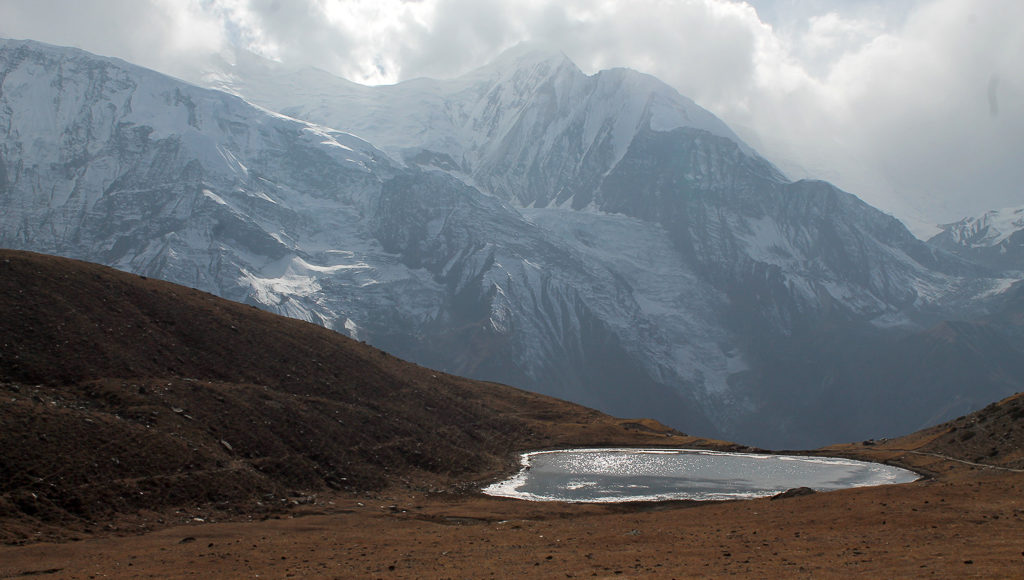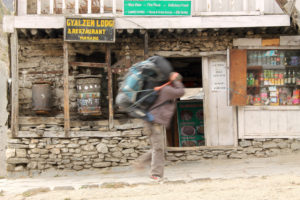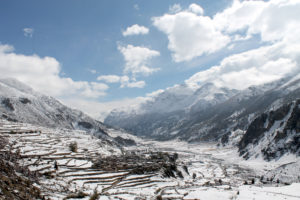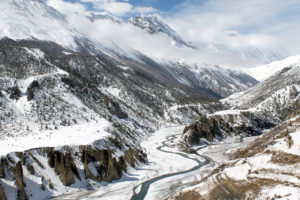Day Eight | 11,614 ft Above Sea Level
It’s three o’clock in the morning and I’m wide awake. I’m in my sleeping bag, but it’s freezing cold. The end of October is supposed to be the best time of the year for this trek, but it’s -12°C (10°F) outside, and a snowstorm is raging overhead. Water drips from the icy faucet. The yaks complain loudly, humming well into the night. In the distance, the reverberations of avalanches cause the window panes to vibrate.
Last year, the conditions of the season were similar. With new snow measuring a meter high and avalanches, the circuit became uninhabitable for a few days. Entire villages were snowed in. Forty-three people died. Conditions like this are not typical this time of year. Could it be due to climate change? It’s hard to say with certainty.
I’m in Manang—which is the end of the road. From here, you can cross the Thorong-La Pass in three days, provided the weather gods play along. Unfortunately, we are snowed in, likely for the next three or so days.
My international companions and I watch a movie in one of the many improvised “cinemas” of Manang. Projected onto a stretched canvas, a bad copy of Seven Years in Tibet is screened. Heinrich Harrer, embodied by an angel-blonde Brad Pitt, talks enthusiastically about the mountains, while he gazes absentmindedly into the distance: “The absolute simplicity. That’s what I love… Your mind is clear, free from all confusions; you have focus. And suddenly the light becomes sharper; sounds are richer. And you are filled with the deep, powerful presence of life.”
Even though I do not share the affinity of the mountains with my fellow countrymen, somehow the intoxication of the peaks also draw me in. My goal? Seeing the Annapurna peaks in their full splendor and crossing Thorong-La. I’m curious to explore my physical limits and find out how my body will react to an altitude higher than 17,700 feet above sea level.
I’ll admit, I am experiencing the first signs of altitude sickness: my heart is racing unnaturally fast, my head is buzzing, the palate sticks to the throat, the legs weigh heavily and every muscle aches. My body is trying to catch up and process the altitudes that I have marched in the past few days.
Once again, I unload my backpack and try to reduce weight on a gram-by-gram basis. Long underwear, soap, and cardboard boxes containing muesli bars are sorted out. I hesitate letting go of William Faulkner’s book The Sound and the Fury, but ultimately it does not cross my heart to leave it behind. Nevertheless, I manage to purge another quarter kilo.














No comments